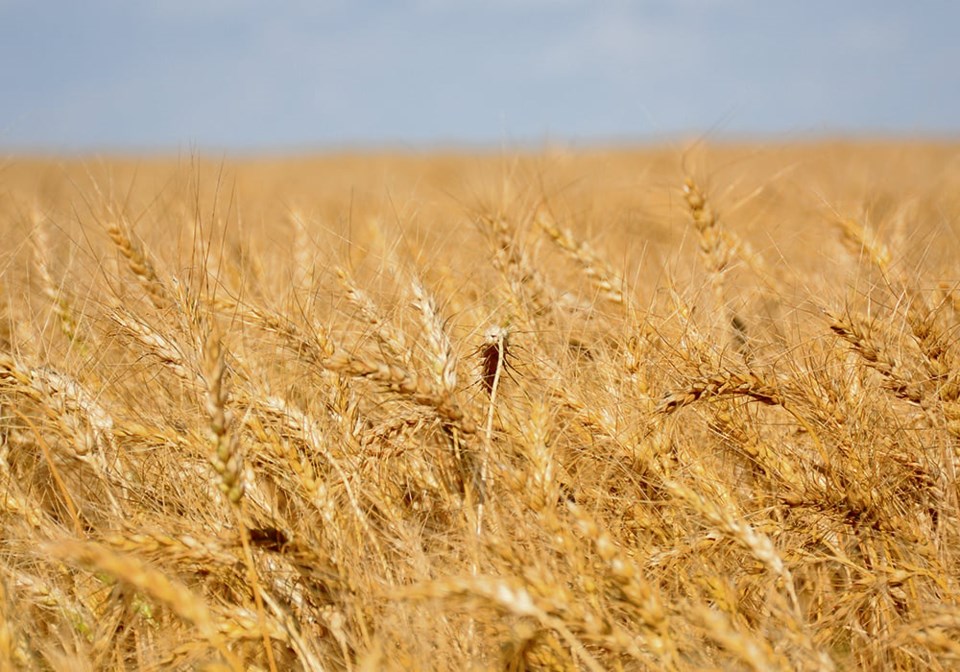WESTERN PRODUCER — Cereals Canada has a new tool to help customers keep track of what is happening with Canada’s wheat crop.
The Growing Season Progress Report published on the organization’s website provides buyers with timely updates on the 2023 crop.
“We encourage you to check back every couple weeks to see how Canada’s wheat crop is growing,” Leif Carlson, director of market intelligence and trade policy, told customers during a recent webinar.
The report provides grain buyers with updates on seeding progress in May-June, crop conditions in July-August and harvest progress in September-October.
Cereals Canada is working with provincial agriculture departments to provide information on conditions in Alberta, Saskatchewan and Manitoba.
There are provincial highlights, maps and links to crop reports on the organization’s website, as well as historical data for the past three years.
“The Growing Season Progress Report is a terrific way for those who are interested in the western Canadian wheat crop to quickly get all their information in one place,” Carlson said in a recent news release.
“We make it easy to stay abreast of what’s happening with the current wheat crop, including environmental factors that could impact crop quality or development.”
During the webinar he provided a general overview of conditions to date.
April saw cooler-than-normal temperatures, especially in Manitoba and eastern Saskatchewan.
That delayed seeding in early May because the snowpack took longer to melt, and the soil was slow to warm.
However, temperatures heated up significantly in May, and farmers were eventually able to get the crop in the ground at a normal pace.
Higher temperatures can be good for crop development, but it needs to be accompanied by ample rainfall, which hasn’t occurred in southern Alberta.
“We’ve seen concerns in the western part of Canada’s growing region about lower-than-normal precipitation,” Carlson told the international buyers.
There is still opportunity for timely rains to give the wheat crop a boost in Alberta, he said.
Agriculture Canada is forecasting 28.38 million tonnes of non-durum wheat production, a 5.5 percent increase over last year, and 5.82 million tonnes of durum, a 6.9 percent bump.
“If we get good weather in Canada, we’ll be able to turn that weather into more wheat,” he said.
Carlson invited a couple of farmers to the webinar to provide their perspectives on the 2023 crop.
Josh Boersen, a grower from southwestern Ontario, said the winter wheat crop in that province was seeded from September to November.
“A significant amount of acres were able to be planted into some of the best conditions there has ever been,” he said.
The crop was in excellent condition heading into dormancy and it was a mild winter, so there were very few issues with winterkill or loss of plant stands.
There were cool conditions in early spring, which is good for the crop. That was followed by a period of dryness in May and early June.
However, a significant portion of the province’s crop has recently received a good dose of rain during the beginning of the reproductive and grain filling stage of development.
“At this point in time, everything is looking probably as good as it has in quite a while,” said Boersen.
Quality should be top-notch as well due to the long spell of dry conditions that kept diseases at bay.
Lesley Kelly grows Canada Western Red Spring wheat in central Saskatchewan.
Seeding started during the first week of May. It was quite cool in most areas due to a snowfall in late April and early May.
There were timely rains during seeding. Her farm received slightly more than 50 millimetres, which was nice after a couple of dry years.
“Overall, our moisture condition has been quite good,” she said.
The weather turned hot after seeding, which has helped with emergence and crop development.
She said crop conditions in Saskatchewan are mostly good to excellent, which is encouraging.
However, farmers are going to need rain in the next few weeks or crops will become stressed due to the hot weather.

